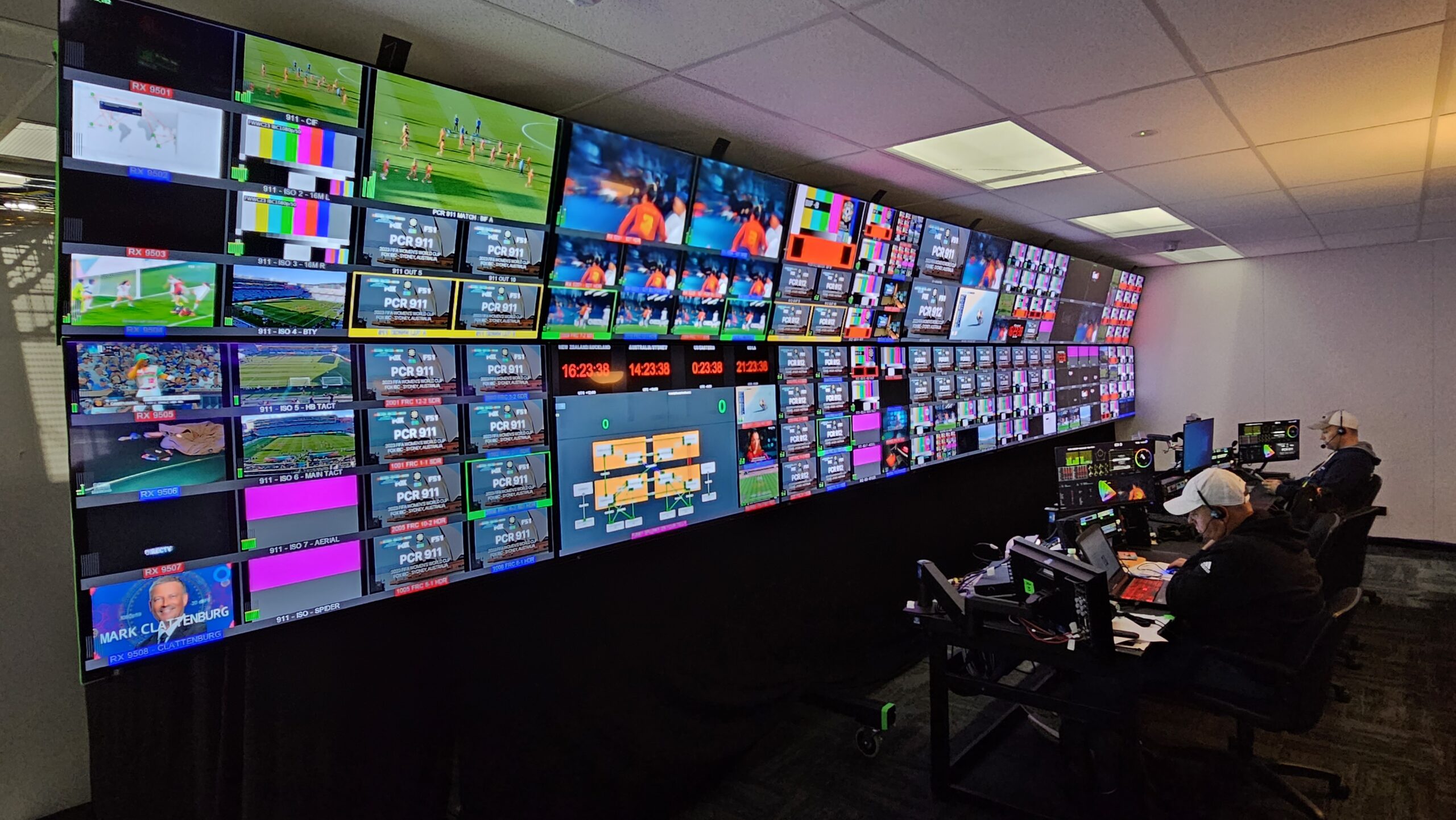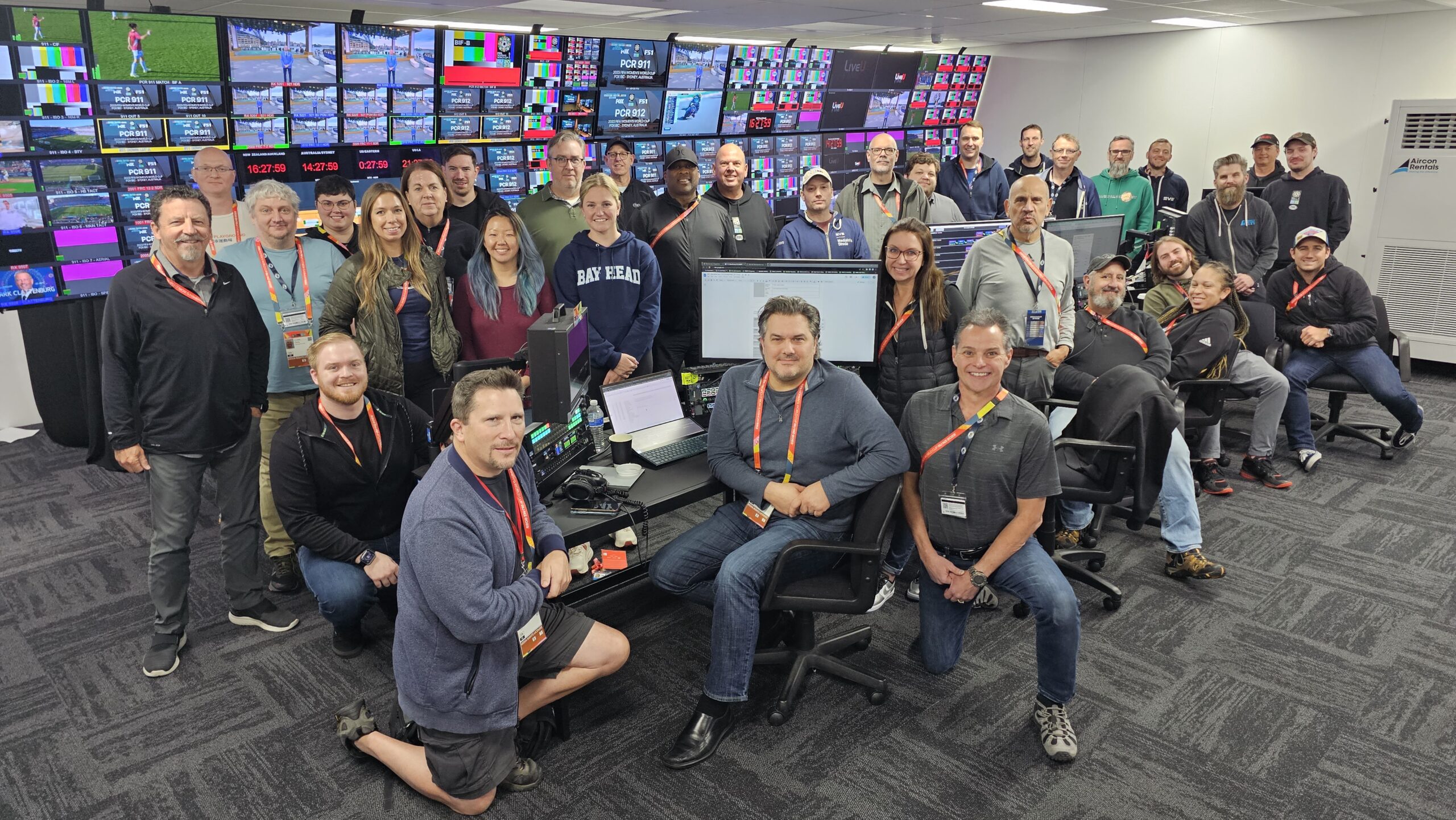Live From FIFA Women’s World Cup: Fox Sports’ Kevin Callahan Discusses Evolution of Jewel Event Flypack
Production effort goes from ‘bleeding edge’ in Qatar to ‘cutting edge’
Story Highlights
The 2023 FIFA Women’s World Cup has entered the Quarterfinals Stage, and, for everyone involved, it signals the end of a long run of long days, with a quick day off to reflect, reset, and focus on the end of the tournament. According to Kevin Callahan, VP, field operations and engineering, Fox Sports, things have been going well for the broadcaster, which has onsite match control rooms for a Women’s World Cup for the first time since 2015 in Vancouver. The team is also continuing to build, along with FIFA and HBS, on new workflows deployed in Qatar.
“When we were in Qatar,” says Callahan, “what everybody was doing was a science experiment. I think now that science experiment is over. We’ve gone from bleeding edge to cutting edge. We’re still doing things most people aren’t doing, and we’ve taken the next steps and added features rather than just adding to the bug list.”
The Fox Sports production team at the IBC plays a key role in nearly every aspect of the effort, as the two match control rooms are where everything comes together: the FIFA and HBS match production, graphics, commentary, and much more.
“All of the matches go there, regardless of where the announcers are,” says Callahan. “Whether they are onsite or calling off-tube, it comes here for Fox Box integration and final integration with the studio programming going to and from halftime and the end of the game.”
The IBC also is home to the core engineering team, the media-management team, and the remote-operations center, where all the feeds, both inbound and outbound, are managed. The team is connected to facilities in the U.S. as well as to the studio location at Campbells Cove in Sydney. More than half the crew — all EVS operators, graphics operators, the entire feature team — is working remotely in the Vault at Fox’s Pico facility in Los Angeles.

Monitoring all incoming FIFA World Cup feeds is a big part of life at the IBC for Fox Sports and other rightsholders.
“We’re recording all of the feeds coming from FIFA and HBS, whether a watch-party feed, an additional-content feed, or iso feed,” says Callahan. “We want to be able to get all of the content that they are producing and show it to viewers at home.”
Jewel Event System: The Third Deployment
The Women’s World Cup is the third event for which the Fox Sports Jewel Event system is deployed. First used at the 2022 FIFA Men’s World Cup and then at Super Bowl LVII, the system leverages IP and SMPTE ST 2110 technology in 20 racks of equipment from TAG Video Systems and EVS, which are pre-cabled and configured before folding down in half for shipping via air from the U.S. There are two in use in Sydney: one at the IBC at Sydney Olympic Park and one at the technical-operations center for the studio shows at Campbells Cove.
“This is our third deployment of the Jewel Event system,” says Callahan. “We’ve been able to fine-tune things based on the learning experiences we have had. We’re able to use it [the way] we expected to use it, with all the features that we had hoped for when we were designing the system.”
The improvements did not require new gear but rather updates from EVS, TAG Systems, Arista, and Calrec. That involved a lot of testing to minimize risks as much as possible. “When you have the words Jewel Event in the name of the system,” he adds, “you, generally speaking, are going to be risk-averse, so we needed things to be tested and resilient.”
Among new features is the ability to do a lot of additional monitoring, including seeing what sources are going where and making sure all the redundancies are in place for an IP-based system.
“We also now have 2022-7 redundancy so there is more resiliency between Sydney and Los Angeles,” Callahan explains. “Now that we have had it set up for 30 days in a row, we’re able to take advantage of that.”
The benefits of the Jewel Event system begin with setup at the IBC. According to Callahan, the team was able to cut a week from the effort. “By the time we get to the Euros next year, we will be able to cut another week. We just need to do a lot of leg work ahead of time in terms of programming to make that a reality.”
Another improvement to the Jewel Event system is that the digital team, which has its own set at Campbells Cove, is now tied into it. “We knew that they were going to be part of us,” he says, “and we don’t have to bolt them on or think about them as an afterthought because they’re designed into the Jewel system. The digital team can access all the same feeds so that shows like World Cup Now, which is a personality-driven show, have access to all the same content.”
Also helping in connecting everyone is the use of switching gear supplied by Arista, provider of the core networking environment.
“The Arista 7508 switch router is our core 2110 switch,” Callahan explains. “We are also using one of their newest items, the 710P compact series switches. It’s a nice fanless switch that we’re able to deploy in various rooms as a true edge switch. It’s deployed just about everywhere: in our match control rooms, on each of the stages, at researcher positions, and in the Vault in Pico. The 710p supports PTP, which is key for an IP broadcast environment.”
Deploying tools for advanced monitoring has been a big help, he adds, because it eliminates the days of walking into the IBC and learning that the power supply has been out or the international circuits are down.
“We have a lot of advanced alerting and monitoring between Telstra and our media-broadcast team,” he notes, “When something’s out, we can react quickly. Knock on wood, we haven’t had any on-air implications.”
At the Venues
The Fox Sports presence at the matches varies by match. Some have two reporters with ENG teams and announcers in the commentary position; others have announcers calling off-tube.
“We created an off-tube facility in a hotel in Auckland,” says Callahan, “so that, if we needed our announcers that were based in New Zealand to call a match, they could do it from the comfort of their hotel without having to fly to Sydney. We’ve also added aerials for two of the three Group Phase matches as we feel that is something our coverage needs to truly bring the spirit of the event home to the viewer in America.”
With fewer rightsholders in Australia and New Zealand, not all of the previous services, such as commentary cameras, are available onsite. Says Callahan, “We’re going without a comcam and, instead, have our announcers go to the pitch if we have an ENG crew at the match.”
The biggest overall change at this World Cup compared with previous editions is that the core HBS production team for each match is working from a production hub located in Sydney instead of at the venue. That means a much smaller presence at each venue, which also means more planning to avoid running into any issues.
“As long as everyone stays within the carefully defined parameters,” Callahan points out, “the signals are able to move perfectly fine. But, when you try to react to something late, you don’t have the flexibility to do that easily.”
The team effort from Fox Sports has been great, he adds, noting that those who are onsite, especially fellow North American rightsholders Telemundo and TSN Canada, share in a positive energy with HBS, FIFA, and the other rightsholders.
“The energy has been great and upbeat,” Callahan says. “It’s always good to see our colleagues from around the world. It’s communal, and everyone looks to help each other out, whether it’s exchanging footage from the Fan Festivals or working with Telemundo, who we have a great relationship with as both of us have rights to the U.S. team and the U.S. venue.”

